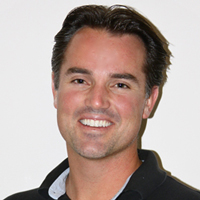Balancing a healthy diet and a consistent exercise routine can often feel like a complicated equation, but successful healthy living is truly about synergy, not sacrifice. The key to long-term,
How to Prevent Postural Pain in Cyclists
April 13, 2015 7:03 pm / Category: Get You There
Remember the days when you could turn your neck to look behind you as you backed out of a parking space? Or when you could look down and actually see your feet without bending forward? Your inability to make simple movements now-a-days may be a symptom of “Pedal Pushers Postural Pain Syndrome.” It’s what happens when you ride a bike for eight hours per week while also working 55 hours in an office chair. You know the feeling—that lovely stiffness, neck pain, and burning between your shoulder blades that’s oh-so magical.[one_half]Let’s do some quick math to determine how much time the average cyclist spends sitting every day. As an example, let’s use Ted; Ted sells insurance by day and loves to ride his mountain bike in the evenings… and binge watch Real Housewives of Orange County. (No judgement, here.) So, Ted’s daily sitting time looks something like this:
- Drive to work = 1 hour
- Work = 8 hours
- Drive home = 1 hour
- Bike ride = 2 hours
- TV time = 2 hours
- Daily total = 14 hours! In just one day!
[/one_half][one_half_last][/one_half_last]If this sounds eerily familiar, (except maybe you prefer Keeping up with the Kardashians over Real Housewives) consider this: the human body was never designed to sit in a chair for extended periods of time. In fact, our bodies were designed to stand or squat, but not sit.
Sitting for a long time can lead to tight hip flexors, weak butt muscles, and a stiff spine. Ouch. However, I have great news! This stuff is easily fixable; you just have to be diligent and willing to make a few small changes that will significantly improve your quality of life.
Kevin’s Seven Tips for Phasing Out Pedal Pushers Postural Pain:
- Get UP! Walk, move, and stretch every 30 minutes throughout your work day.
- Take conference calls standing up. Get a wireless headset and pace your office while listening to your boss ramble. Just make sure to put it on mute and watch where you’re going!
- Do Yoga or Pilates during your lunch break. Many studios offer abbreviated lunch-time classes for just this reason. I cannot tell you how nice it is to walk on over to ABC Pilates at noon and stretch out my stress.
- Learn to love your foam roll. Stretch and foam roll every night. You can buy one for cheap and work out that tension while you’re on your fourth episode of the night.
- Get massages frequently. Tissue work helps to clean up the bogginess in your fascia (the connective tissue fibers that surround your muscles) and will have immediate pain relieving effects.
- Stretch your hip flexors and strengthen your butt.
- Get a great Bike Fit! A proper Bike Fit is a valuable service. These pros can make the necessary adjustments to your machine that will help with comfort, injuries and power output. You can google around for local bike shop that does Bike Fits, or if you’re in South Orange County check out Rausch PT’s tried and true favorites:
Yes, new bikes are pretty, but spend some time on the motor that pushes your bike along: YOU! The more dedicated you are to making these simple changes, the better you’ll feel and the faster, better and longer you’ll ride. To get you started, I’ve made a free cycling-specific exercise program to help with postural pain. Go to www.homeprograms.net, and the login information is:
Your Email Address: bikerider@bike.com
Your Clinic ID: 1006
So get on it and start taking care of your motor today. It totally deserves it.
All the best to your health,







